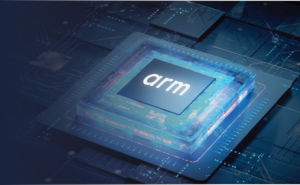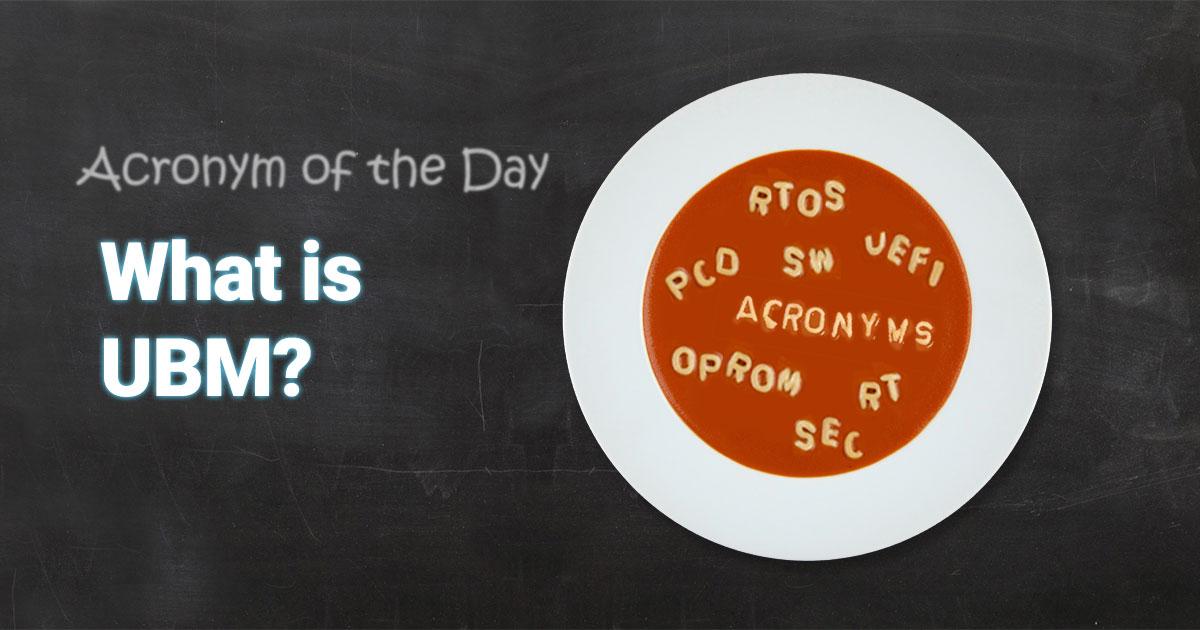Today we are back with another “Acronym Soup” blog post, this time asking the question: what is UBM?
To answer, let’s first begin with a brief history lesson on server hardware – specifically the time when 2.5″ HDDs were introduced as storage media for these platforms. When these disk drives arrived on the market, nearly every HDD vendor made independent decisions on their characteristics such as physical size and shape, mounting points, connector type and location, and similar details. In turn, this lack of uniformity made it difficult for backplane manufacturers to accommodate the variety from one vendor to the next, creating connectivity and manageability issues along with other related problems.
In response, a group of industry-leading companies organized a forum called the Small Form Factor (SFF) Committee, which provided a mechanism for system integrators and vendors to define specifications for the form factor of disk drives and similar details. Some years later, an organization called the Storage Networking Industry Association (SNIA) emerged, which included the SFF as one of its technical workgroups, to continue the work of addressing compatibility issues around drive form factors, connections, management protocols and the like.
According to SNIA, the SFF Committee continues its work today as “a forum for resolving industry issues that are either not addressed by the standards process or need an immediate solution. Many of the specifications developed by SFF have either been incorporated into standards or adopted as standards by ANSI, EIA, JEDEC and SAE.”
And this brings us to UBM, which you might have already guessed, is an acronym for Universal Backplane Management. In 2018, SNIA/SFF released the Universal Backplane Management (UBM) specification, formally known as the SFF-TA-1005 Specification for Universal Backplane Management (UBM), to help bring some order and clarity to the confusion mentioned above.
The SFF-TA-1005 Universal Backplane Management (UBM) specification represents the collaboration of more than 20 industry-leading participants and provides a common management framework for SAS, SATA, and NVMe (PCIe) devices, helping to unify and standardize backplane management in heterogeneous environments – like many data centers today.
Fast forward to a little over a year after the release of the UBM specification and it continues to gain support from a wide cross-section of server and storage OEMs, data centers and device vendors. Collaboration between storage ecosystem suppliers through SNIA/SFF on the UBM standard has produced a robust management standard that can be widely adopted across the industry, ensuring that universal storage bay management is supported by – and compatible with – all ecosystem components.
The wide acceptance of the UBM specification is largely due to the key features and benefits that it provides, including:
- Complete support for SAS, SATA and NVMe backplanes
- Support for diverse storage topologies
- Unification of the capabilities of different backplane management schemes including SGPIO (SFF-8485), 2-Wire SES and 2-Wire PCA9555
- High-speed lane mapping descriptions
- Device slot and device presence information
- Management of LED states
- Power state control
- Management of PCIe Reset and Reference Clock mechanisms
- A high degree of extensibility to accommodate future innovations and technologies
AMI is proud to be a strong supporter of the UBM specification, as shown by its latest offering in the MG Series Backplane Controller product family. Introduced in March of 2019, the MG9100 UBM Controller is a low-cost, small footprint solution for enclosure management of single and dual ported NVMe SSD Backplanes as well as traditional SAS/SATA backplanes through the UBM protocol. It does this with the help of two UBM SMBuses to communicate with the UBM controller on the host. A single MG9100 controller can support up to 8 drives, while maximum of 32 drives can be supported when four MG9100 controllers are cascaded together, making it as powerful as it is versatile.
Thanks for reading today’s Tech Blog, we hope you found this bit of Acronym Soup refreshing and enjoyable! Feel free to drop us a line via social media or our Contact Us form and let us know what you thought of today’s post – as well as what you might like to see in future posts!






